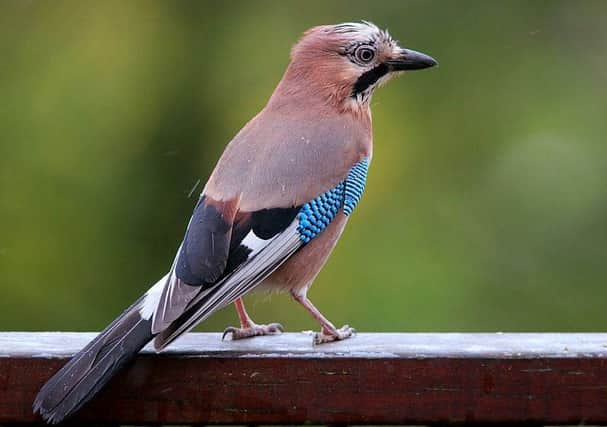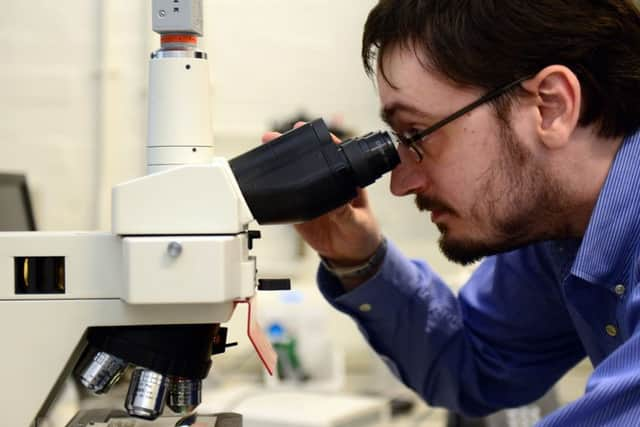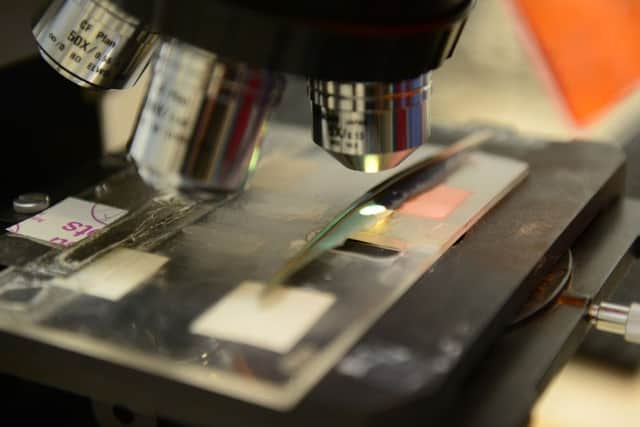Little birdies tell of the natural way not to go grey


A team from Sheffield University looked at how the colours are created in the blue-and-white feathers of the jay - the most colourful member of the crow family - and found that they come from the way they are structured rather than the pigments that colour human hair.
This natural process, if adapted in the human environment, could unlock the potential for creating fade-free materials, from fabrics to paints.
Advertisement
Hide AdAdvertisement
Hide AdThe level of control and sophistication that the research team found in the jay for producing its colours took them by surprise.


Using X-ray scattering at the European Synchrotron Radiation Facility in Grenoble, France, they found that instead of simply using dyes and pigments that would fade over time, the birds use well-controlled changes to the nanostructure to create their vividly coloured feathers - which are possibly used for jays to recognise one another.
“If we created a red jumper using this method, it would retain its colour and never fade in the wash.”
Dr Andrew Parnell, from the University of Sheffield’s Department of Physics and Astronomy
Advertisement
Hide AdAdvertisement
Hide AdThe jay is able to pattern these different colours along an individual feather barb - the equivalent of having many different colours along a single human hair.


The species feathers, which go from ultra violet in colour through to blue and into white, is made of a nanostructured spongy keratin material, exactly the same kind of material human hair and fingernails are made from.
The researchers found that the bird is able to demonstrate amazing control over the size of the holes in this sponge-like structure and fix them at very particular sizes, determining the colour that we see reflected from the feather.
This is because when light hits the feather, the size of these holes determines how the light is scattered and therefore the colour that is reflected.
Advertisement
Hide AdAdvertisement
Hide AdLarger holes mean a broader wavelength reflectance of light, which creates the colour white. A smaller, more compact structure, results in the colour blue.
If the colours were formed using pigments created from the bird’s diet, the feather colour would fade over time. However, since nature has developed a way to create the colours through structural changes, any nanostructure will remain intact, explaining why birds never go grey as they age.
Dr Andrew Parnell, from the University of Sheffield’s Department of Physics and Astronomy, said: “Conventional thought was that to control light using materials in this way we would need ultra precise and controlled structures with many different processing stages, but if nature can assemble this material ‘on the wing’, then we should be able to do it synthetically too.
“Now we’ve learnt how nature accomplishes it, we can start to develop new materials such as clothes or paints using these nanostructuring approaches.
Advertisement
Hide AdAdvertisement
Hide Ad“It would potentially mean that if we created a red jumper using this method, it would retain its colour and never fade in the wash.”
The breakthrough, if applied to fashion and design, could give longer life to consumer products.
Researcher Dr Daragh McLoughlin of AkzoNobel Decorative Paints, makers of Dulux paints, explained: “This exciting new insight may help us to find new ways of making paints that stay brighter and fresher-looking for longer, while also having a lower carbon footprint.”
Researchers used selected feathers from the extensive collection at the Natural History Museum in London for their study and the groundbreaking findings have been published for the first time today in the Nature Scientific Reports trade journal.